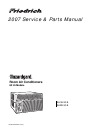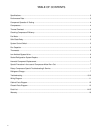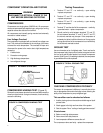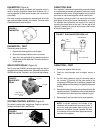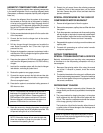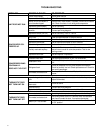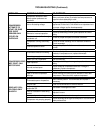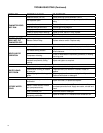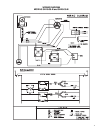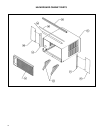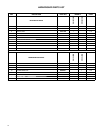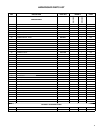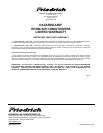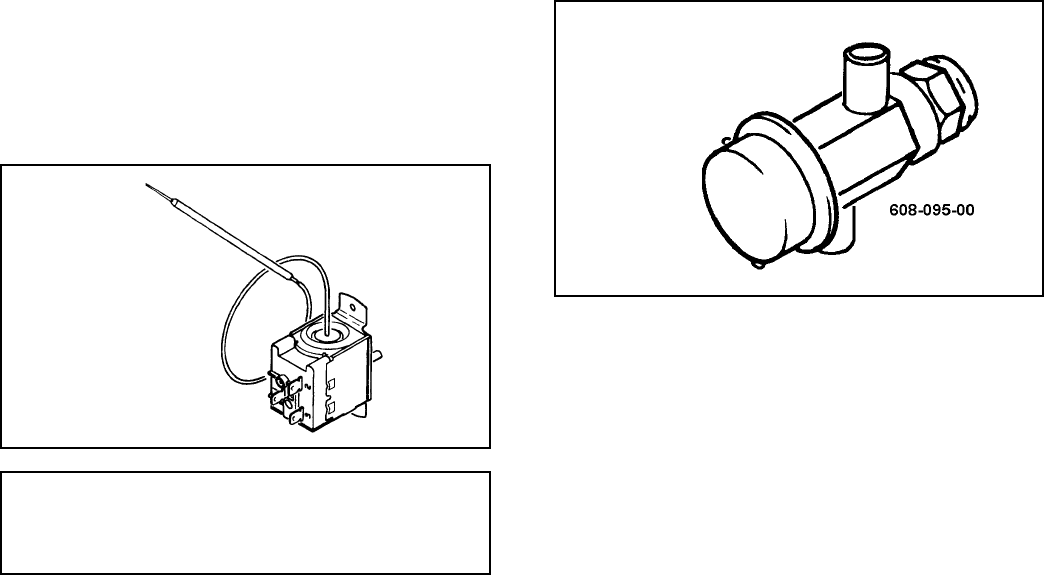
6
THERMOSTAT
A cross ambient thermostat is used to maintain the desired
comfort level. The thermostat reacts only to a change in
temperature at the bulb location. Important to the successful
operation of the unit is the position of the sensing bulb in relation
to the evaporator (see Figure 8).
TEST
Remove the wires from the thermostat. Turn the thermostat to
its coldest position. Check to see if there is continuity between
the two terminals. Turn the thermostat to its warmest position.
Check continuity to see if the thermostat contacts open.
Note: The temperature must be within the range listed to check
the thermostat. Refer to the troubleshooting section in this
manual for additional information on thermostat testing.
LOW AMBIENT BYPASS VALVE (Figure 9)
The HazardGard unit is designed to operate at low outside
ambient temperatures. This is accomplished by the use of a
bypass valve installed in the refrigeration circuit. The valve
is connected between the discharge line at the compressor
and the suction process tube. The valve responds to suction
pressure which, when reduced in the system, causes the
valve to open and bypass hot gas from the high pressure side
to the low pressure side of the system. The hot gas entering
the compressor mixes with the cool gas returned through the
suction line, thus increasing the suction pressure. The valve
is preset to open when the suction pressure reaches 50 psig.
This pressure setting cannot be altered. The system can be
operated at outdoor temperatures as low as 45°
F before the
evaporator coil will begin to accumulate frost.
To determine if the valve operates, block the return air to the
evaporator coil. Turn on the unit and touch the tube at the
bypass valve outlet which connects to the suction process
tube. When the low side pressure reaches approximately 50
psig, the valve will begin to open and the tube will get hot. This
method will determine if the valve is responding to the suction
pressure change.
FIGURE 9
LOW AMBIENT
Bypass VALVE
SEALED REFRIGERATION SYSTEM
REPAIRS
Equipment Required:
1. Voltmeter
2. Ammeter
3. Ohmmeter
4. E.P.A Approved Refrigerant Recovery System
5. Vacuum Pump (capable of 200 microns or less vacuum).
6. Acetylene Welder
7. Electronic Halogen Leak Detector (G.E. Type
H-6 or equivalent).
8. Accurate refrigerant charge measuring device
such as:
a. Balance Scales - 1/2 oz. accuracy
b. Charging Board - 1/2 oz. accuracy
9. High Pressure Gauge - (0-400 lbs.)
10. Low Pressure Gauge - (30" - 150 lbs.)
11. Vacuum Gauge - (0-1000 microns)
Equipment Must Be Capable of:
1. Recovering CFC’s as low as 5%.
2. Evacuation from both the high side and low side of the
system simultaneously.
3. Introducing refrigerant charge into the high side of the
system.
4. Accurately weighing the refrigerant charge actually intro-
duced into the system.
5. Facilities for fl owing nitrogen through the refrigeration
tubing during all brazing processes.
RANGE: Thermostat
(Part No. 618-225-02)
60° F ( ± 2° ) to 90° F( ± 4° )
FIGURE 8
SENSING
BULB LOCATION



